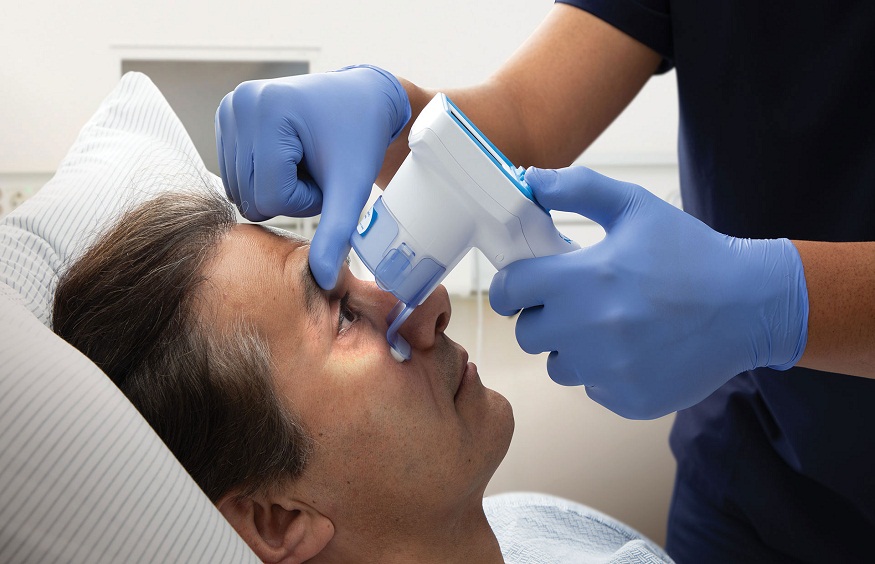Pupil diameter measurement is a fundamental aspect of pupillary evaluation, playing a critical role in neurological examinations and patient assessments. Whether conducted as part of a routine neuro exam or during emergency medical evaluations, accurately measuring pupil size can provide crucial information about a patient’s neurological status. This practice helps healthcare professionals quickly assess brain function, detect abnormalities, and decide on appropriate interventions. As medical science advances, the precision of pupil diameter measurement has grown increasingly essential, requiring specialized tools and methods such as the Neurological Pupil Index (NPi).
The Role of Pupillary Evaluation in Neurological Assessments
Pupillary evaluation is a vital component of neuro exams, offering real-time insights into a patient’s neurological condition. The pupil’s size, symmetry, and reactivity to light can reveal significant information about brain function, cranial nerve integrity, and overall neurological health. Any abnormal response during this evaluation can be an early warning sign of serious conditions such as increased intracranial pressure, brain injury, or stroke. Therefore, accurate pupil diameter measurement is integral to ensuring that these critical assessments are reliable.
Neurological Tools for Pupil Diameter Measurement
Historically, pupil size was measured using basic manual tools like rulers or penlights. However, these methods often introduced human error, especially when quick, accurate decisions were necessary. Today, advanced neurological tools have emerged to ensure more precise and efficient measurements.
Digital pupillometers have become a standard in modern medical practice for assessing pupil diameter. These devices allow for rapid, objective measurements of pupil size, reactivity, and symmetry, offering healthcare professionals greater accuracy than manual methods. They are especially valuable in fast-paced settings such as emergency rooms, intensive care units, or during post-surgical monitoring.
Another key tool that has revolutionized pupillary evaluation is the Neurological Pupil Index (NPi). This algorithm-based measurement system calculates the reactivity of pupils and provides a numerical value that can be monitored over time. The NPi is not only beneficial in detecting changes in a patient’s neurological condition but also in guiding clinical decisions during the critical stages of patient care. By using a standardized scoring system, healthcare teams can ensure consistency and accuracy in pupil diameter measurements, even across different shifts or practitioners.
The Impact of Accurate Pupil Diameter Measurement in Critical Care
In critical care environments, where every second counts, precise pupil measurement can mean the difference between life and death. Conditions such as traumatic brain injury, stroke, or increased intracranial pressure often present with changes in pupil size and reactivity. In such cases, a small error in measuring pupil diameter or misinterpreting results can delay essential interventions.
In the context of brain trauma, for example, rapid swelling can increase pressure inside the skull, compressing vital brain structures. One of the early indicators of this is a change in pupil size or reactivity. By performing this neuro exam, clinicians can track the progression of neurological decline and respond with interventions such as surgical decompression, medication, or other treatments aimed at reducing intracranial pressure.
Similarly, in stroke cases, pupil measurement can provide immediate feedback on the extent and location of damage to the brain. A dilated or non-reactive pupil may indicate severe brain injury, prompting an urgent need for further diagnostic tests such as CT or MRI scans, followed by swift medical or surgical intervention.
Enhancing Patient Outcomes with Advanced Technologies
The introduction of modern pupil measurement technologies such as digital pupillometers and NPi scoring systems has significantly improved patient outcomes. These advancements ensure that the pupil size is measured with precision and that subtle changes are detected early. This early detection allows for more timely interventions, which is particularly important in time-sensitive cases like head trauma or stroke.
Beyond their role in emergencies, these tools are also indispensable in long-term monitoring situations, such as in post-operative care or when treating chronic neurological conditions. Their ability to provide objective, quantifiable data removes much of the guesswork associated with manual methods. As a result, healthcare professionals can make more informed decisions, leading to improved patient care.
Conclusion
Accurate pupil diameter measurement is not a mere routine aspect of medical care—it is a cornerstone of effective neurological assessment. From emergency departments to intensive care units, the ability to measure pupil size reliably and precisely impacts diagnostic accuracy, treatment decisions, and patient outcomes. With modern tools such as digital pupillometers and the Neurological Pupil Index, healthcare professionals are better equipped to perform critical evaluations swiftly and with confidence.

